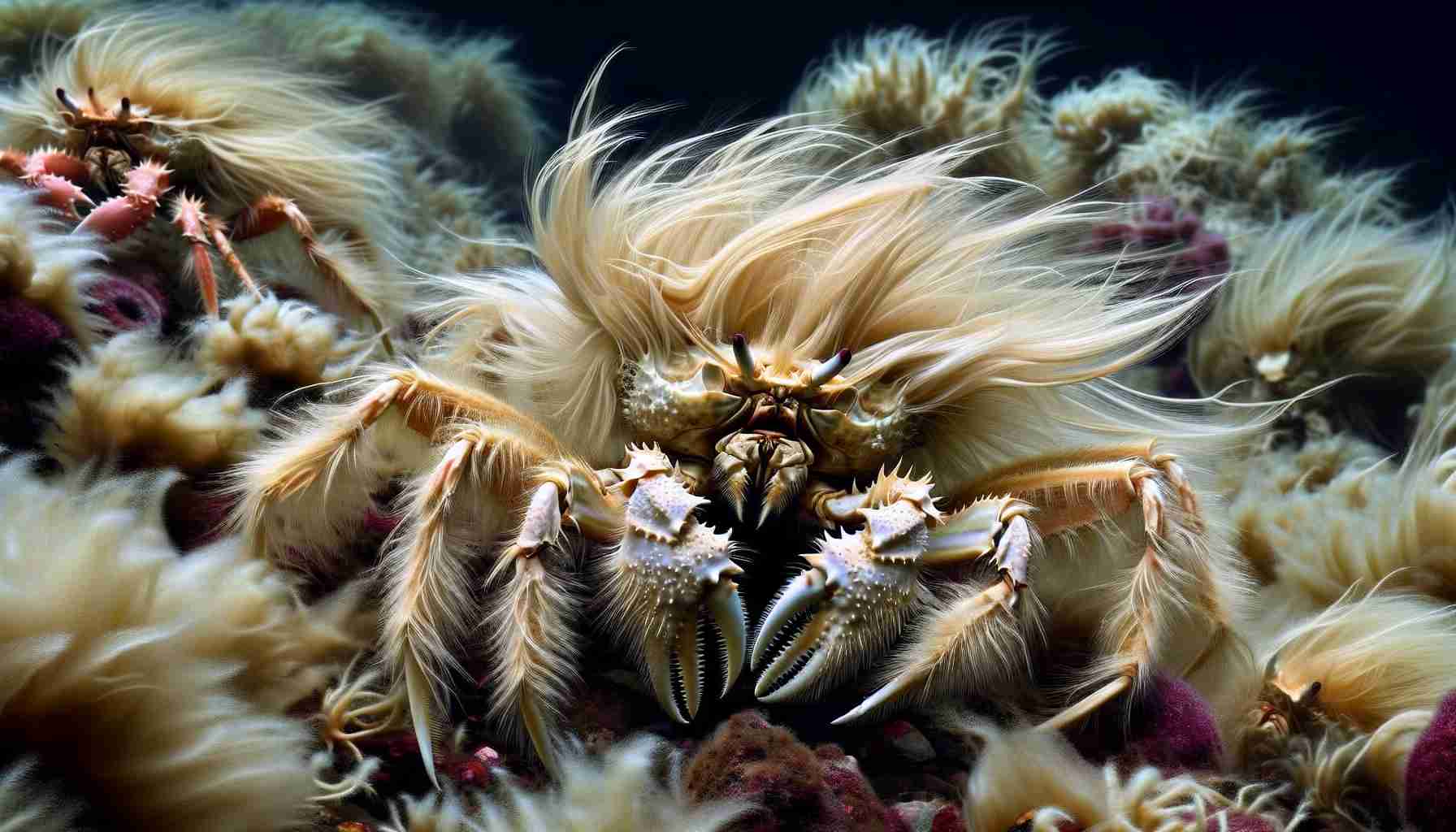- The Hoff crab, or Kiwa tyleri, is a remarkable species found in the Antarctic, known for its large claws and competitive mating behaviors.
- Recent research focused on their social dynamics and claw size disparity, highlighting intense male competition.
- These “yeti crabs” thrive around geothermal vents and form communities that shape their survival strategies.
- Their hairy chests serve a practical purpose by hosting bacteria that provide food for the crabs, demonstrating a unique ecological relationship.
- The study emphasizes the impressive evolutionary adaptations of the Hoff crab in extreme environments.
Dive into the depths of the Antarctic waters, and you’ll encounter an astonishing creature that’s both captivating and competitive: the Hoff crab, officially known as Kiwa tyleri. These remarkable creatures boast enormous claws, especially the males, who wield them in epic battles to win over mates. A recent study led by teams from the University of Portsmouth and Southampton has shed light on their fierce claw size disparity, revealing a spectacular side of the crab world.
With their striking, hairy chests reminiscent of a certain Hollywood icon, the Hoff crab dazzles not just in appearance but also in behavior. These “yeti crabs,” as they are often dubbed due to their furry features, thrive in bustling communities around geothermal vents on the seafloor. While their bristly hairs may resemble a quirky fashion statement, they play a vital role: hosting bacteria that the crabs feast upon. This unique relationship highlights the delicate balance of life in one of the planet’s most extreme environments.
The latest research involved examining a whopping 135 of these intriguing crabs at the East Scotia Ridge in the Scotia Sea, revealing the intricate dynamics of their social structures. The key takeaway? The Hoff crab epitomizes the wonders of evolution and adaptation, showcasing nature’s flair for creating unique solutions for survival.
Isn’t it fascinating how life thrives in the most unexpected places?
Discover the Secrets of the Hoff Crab: Nature’s Marvel Under the Ice!
The Hoff Crab: An Unrivaled Marvel in the Antarctic
Dive into the depths of the Antarctic waters, and you’ll encounter an astonishing creature that’s both captivating and competitive: the Hoff crab, officially known as Kiwa tyleri. These remarkable creatures boast enormous claws, especially the males, who wield them in epic battles to win over mates. A recent study led by teams from the University of Portsmouth and Southampton has shed light on their fierce claw size disparity, revealing a spectacular side of the crab world.
With their striking, hairy chests reminiscent of a certain Hollywood icon, the Hoff crab dazzles not just in appearance but also in behavior. These “yeti crabs,” as they are often dubbed due to their furry features, thrive in bustling communities around geothermal vents on the seafloor. While their bristly hairs may resemble a quirky fashion statement, they play a vital role: hosting bacteria that the crabs feast upon. This unique relationship highlights the delicate balance of life in one of the planet’s most extreme environments.
The latest research involved examining a whopping 135 of these intriguing crabs at the East Scotia Ridge in the Scotia Sea, revealing the intricate dynamics of their social structures. The key takeaway? The Hoff crab epitomizes the wonders of evolution and adaptation, showcasing nature’s flair for creating unique solutions for survival.
New Insights and Trends
# Features and Specifications
– Habitat: Exclusively found in hydrothermal vent ecosystems in the Southern Ocean.
– Diet: Primarily consists of the bacteria that thrive on their hairy arms.
– Behavior: Males display larger claws for combat and mating displays.
# Pros and Cons of the Hoff Crab
– Pros:
– Unique ecological role in hosting bacteria that contribute to nutrient cycles.
– Adapted to extreme conditions, showcasing resilience.
– Cons:
– Vulnerable to climate change and oceanographic disturbances.
– Limited geographical range increases extinction risk.
# Market Forecast
As interest in deep-sea biodiversity grows, the Hoff crab and similar species may attract marine biologists and ecologists looking to study climate change impacts. Their unique adaptations could provide insights into survival mechanisms applicable to other species.
3 Most Important Questions About the Hoff Crab
1. What adaptations enable the Hoff crab to survive in extreme environments?
The Hoff crab has developed specific adaptations, such as its hairy structures that host bacteria, providing a food source in the nutrient-scarce Antarctic depths. Their ability to withstand cold temperatures and high pressure allows them to thrive near hydrothermal vents.
2. How do societal structures influence the mating success of Hoff crabs?
Research shows that larger claws in males are linked to mating success, as they play crucial roles in mate selection through displays of strength. The social dynamics among males often involve competition and ritualized battles, which can determine reproductive success.
3. What threats do Hoff crabs face from climate change?
Climate change poses significant threats such as ocean warming, changes in sea currents, and increased acidity, which can disrupt their nutrient sources and habitat stability. This vulnerability highlights the need for conservation efforts in deep-sea ecosystems.
Explore more about the fascinating world of marine life and the Hoff crab at Science Daily.













